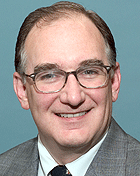Surgery is the only treatment for an abdominal aortic aneurysm, a weak spot in the body’s main artery that dilates dangerously over time. If the vessel ruptures suddenly before surgery to repair it, a quick death is virtually certain.
Now, School of Medicine scientists say they have identified a key enzyme that triggers chronic inflammation in the aorta and promotes the growth of aneurysms. Their finding raises hopes for developing a drug that could prevent small aneurysms from enlarging to the point where surgery is necessary.

Genetically engineered mice that lack the enzyme dipeptidyl peptidase I (DPPI) do not develop aortic aneurysms, the researchers report in the online edition of Proceedings of the National Academy of Sciences.
“We think DPPI is a viable therapeutic target that may keep the growth of aortic aneurysms in check so they don’t become life threatening,” said Robert W. Thompson, M.D., professor of surgery and one of the senior investigators of the study.
The research shows that DPPI is critical for the recruitment of inflammatory cells to the aortic wall, and that these cells push the inflammation from an acute phase into a chronic phase. The researchers suspect that this chronic inflammation eventually causes other enzymes to eat away at the structural proteins of the aorta, causing the vessel to balloon slowly and ultimately rupture in patients whose aortas are greatly distended.
Abdominal aortic aneurysms kill about 15,000 Americans each year. The condition often goes undiagnosed because small aneurysms rarely cause symptoms. Typically, they are discovered by accident when patients have an X-ray or ultrasound for another medical concern.
If an aneurysm is small, doctors generally monitor it closely and recommend surgery only if its diameter grows larger than 5.5 centimeters (about 2 inches). Eventually, 60 percent of patients with small aneurysms will require surgery, a procedure that costs about $20,000. A drug treatment that could help patients avoid the risks and the high cost of major surgery would be ideal, Thompson said.
In the current study, the researchers used an experimental model in mice that mimics aortic aneurysms in humans. They perfused the enzyme elastase into the aortas of the mice, causing the aortic wall to dilate. Two weeks later, the aortas of DPPI-deficient mice had not enlarged much, while the aortas of the normal mice had nearly doubled in diameter.
When the investigators probed further, they found high levels of inflammatory cells in the ballooning aortas of the normal mice but few such cells in the aortas of the mice that lacked DPPI. “Without DPPI, the inflammatory response never really gets going, and the mice don’t develop aneurysms,” said senior author Monica Pagano, M.D., senior research technician in the Department of Surgery.
Thompson’s group became interested in DPPI several years ago when their genetic studies revealed the enzyme is elevated in tissues from both human and mouse aneurysms. The enzyme is found in many cells, including neutrophils. Scientists had thought that the primary role of this enzyme was to degrade proteins. However, new research at the University and elsewhere suggests that its functions lie beyond its degrading activity.
Christine Pham, M.D., assistant professor of medicine and another senior author, developed the DPPI-deficient mouse model and showed that this enzyme modulates many inflammatory processes through the activation of a cascade of enzymes.
The work exemplifies the type of scientific collaboration that leads to novel insights by melding together the interests of two laboratories — one led by Thompson that focuses on a clinical problem and the other led by Pham that centers on particular molecular pathways of disease.
Smokers and people older than 65 are most at risk for developing abdominal aortic aneurysms. Their incidence is expected to rise dramatically in the next decade as the baby-boomer generation ages. The current research will play a critical role in developing new medical treatments for aortic aneurysms in this generation of patients, the scientists say.